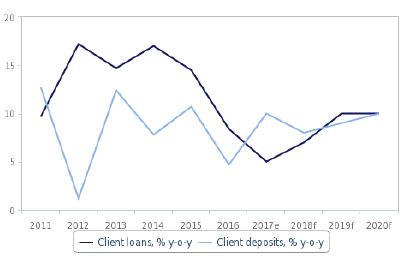
Swakara looking East
The Namibian Swakara industry is conducting a marketing study to determine the viability of attempts to penetrate the lucrative Chinese fur market. The study results are expected by the end of October, according to Raimar Von Hase, Chairperson of the Karakul Board of Namibia.
Swakara is the local version of what was formerly known as Karakul, the black sheep from what is today Iran, whose day-old lambs produce a curly pelt with distinctive tenor. After one hundred years in Namibia, the karakul breed has been refined sufficiently to recognise its distinctive qualities.
Recently the Economist spoke to Von Hase who revealed that a marketing study is under way. This study is done by the Karakul Board’s promotional partners Kopenhagen Fur and their Chinese specialists.
“Kopenhagen Fur, which is the biggest fur auctioneers in the world, has been Swakara’s marketing and promotional partners since 1994. The company keeps a permanent office in Beijing and their staff is extremely knowledgeable and experienced of the Chinese market,” said Von Hase.
He said that the Chinese fur market is the biggest fur market in the world and they consume about 80% of the world’s mink crop of 87 million skins annually hence they saw an opportunity for Namibia’s Swakara to capture a share in the premium segment of that huge market.
“We need alternatives to Greece and Russia because of the current situations they are facing. Greece in itself is not an end-user market for Swakara but Greek furriers have transitionally supplied the Russian market with high class fur garments. The Greek furriers are looking back on an 800 year history of their craftsmanship based in the towns of Kastoria and Siatista in north-west Greece,” he added.
“Currently the biggest Russian problem for Swakara is the loss in value of the rouble since the beginning of 2014. This has dramatically reduced the purchasing power of Russian clients and has also reduced Russian travels overseas. Russian travellers used to frequent in large numbers particular Greek resorts on the Mediterranean Sea with associated shopping of Western luxury goods. Swakara is part of that group of products,” he said.
In other developments relating to the industry, Von Hase said that the Karakul Board of Namibia undertakes an annual promotional campaign with Kopenhagen Fur which consists of inviting top designers to Namibia to acquaint themselves with local products.
“Then a collection of garments is designed and produced which in turn is highlighted in a glossy brochure and big posters. This is then used as promotional material on international fur fashion fairs in Hong Kong, Milan and Paris,” he said.
Meanwhile, according to Von Hase, preparations for the next campaign will kick off in September 2015 when a board delegation visits Copenhagen. The annual September Auction with approximately 60,000 fresh Swakara Pelts will take place in Copenhagen on 25 September.
In terms of challenges other than the marketing aspects, Von Hase said the biggest challenge inside Namibia is to produce enough high quality pelts to provide to the auctions.
“The world market could consume more Swakara but production capacity is limited because of the small national flock of Swakara sheep in Namibia.
Continuous efforts are ongoing by way of lectures, courses, field days as well as media presentations to promote Swakara production among farmers and also to further raise the standard of pelts,” he said.









































